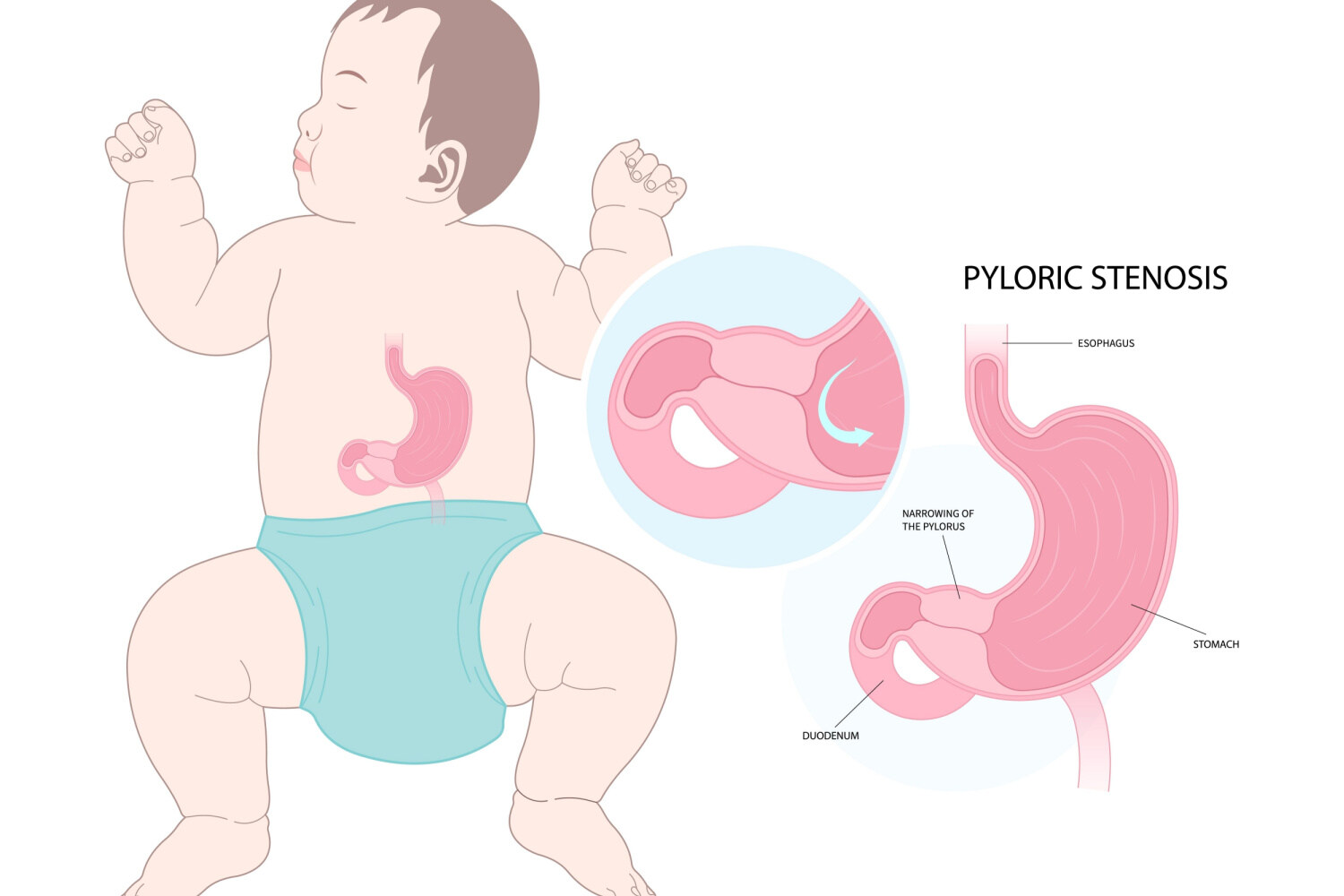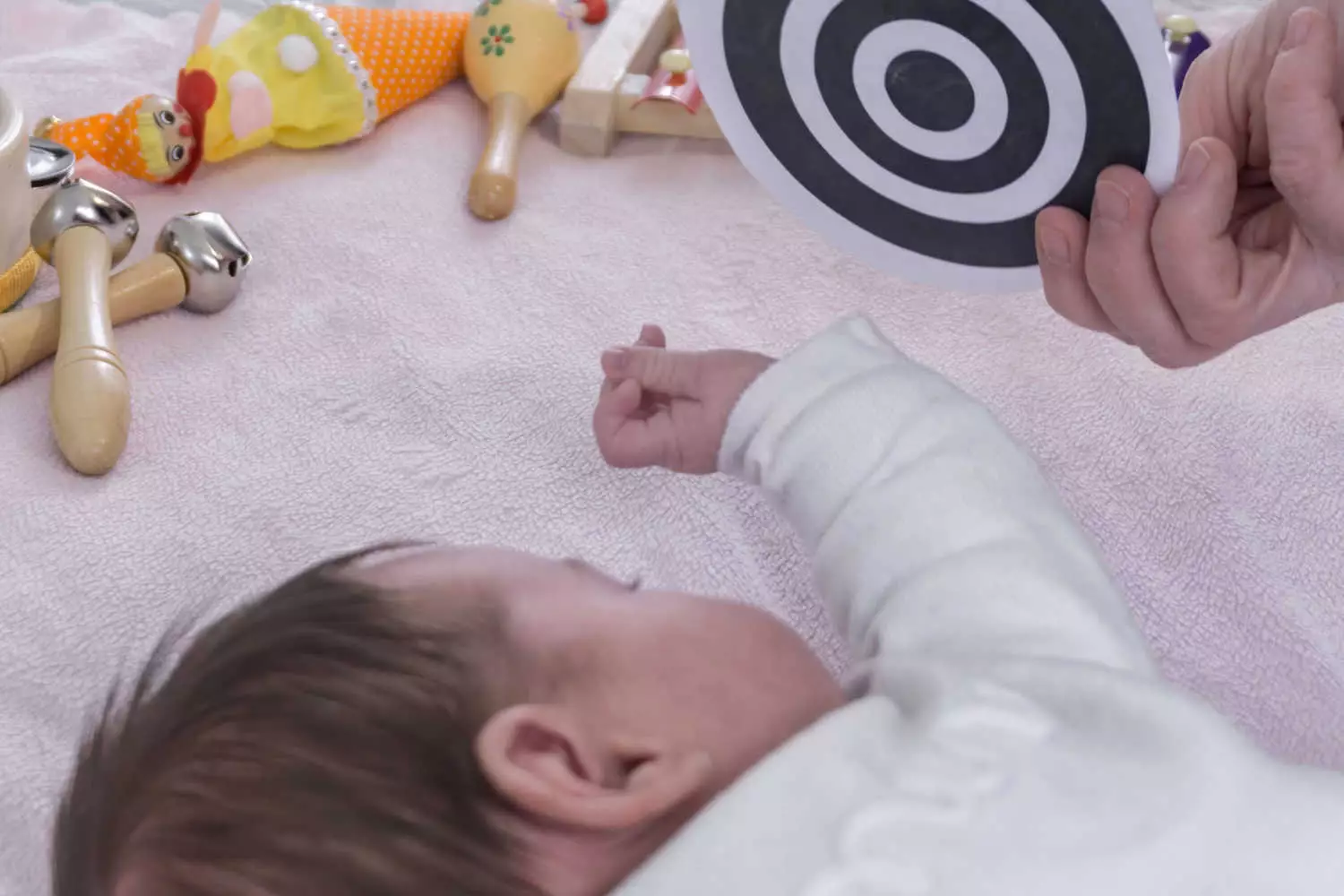
The Story of the Bubble Boy – What is it to Have a Serious Immune Deficiency? by Dr. Sagar Bhattad
11 min readWritten by Sindhuja Prabhu


Have you heard the story of the “Bubble Boy”? No, we are not talking about some sci-fi movie. We are referring to a real-life boy who had to live his life in a bubble. Yes, it did happen and this boy actually lived inside a bubble for his own safety. But he died due after contracting a type of cancer. So, does this mean all babies diagnosed with SCID have to live this way?
Fortunately, no. With the advent of science, technology, and medicine, babies with SCID can lead almost normal lives without having to suffer in a bubble. What is SCID or bubble boy disease? How common is it? Are children at risk of this disease? Read on to find out all about SCID.
In This Article
- The Story of the Bubble Boy
- What is Severe Combined Immunodeficiency?
- How Does Severe Combined Immunodeficiency Occur?
- How Does SCID Impact the Health of a Baby?
- Causes of Severe Combined Immunodeficiency in Babies
- Signs and Symptoms of Bubble Boy Disease
- Diagnosis of SCID in Babies
- How to Prevent Severe Combined Immunodeficiency?
- Treatment Options Available For SCID in Babies
- Precautions to Help a Child With SCID
- When to Seek Doctor’s Help?
The Story of the Bubble Boy
David Vetter, a boy born in 1971, was diagnosed with Severe Combined Immunodeficiency (SCID). This little boy lived his short life in a sterile plastic bubble to protect him from various pathogens and infections in the environment. Since his brother died in infancy due to SCID, the doctors placed him inside a sterile bubble within seconds after birth, once they confirmed he also had SCID. Once a bone marrow transplant became available, they tried to give him a transplant from his sister. But he later died contracting a type of cancer.
What is Severe Combined Immunodeficiency?

Severe Combined Immunodeficiency, more popularly known as SCID, is a rare disorder. SCID is often called “bubble boy disease”. It is a group of rare syndromes a person genetically inherits. It can lead to very little or no immunity, resulting in multiple infections and diseases, which may not affect a person otherwise. What can be a simple or mild infection in a healthy person can be a life-threatening infection for a baby with SCID.
The immune system is the body’s protective shield consisting of white blood cells. These white blood cells are what protect the body from foreign invaders such as fungi, bacteria, and viruses.
Lymphocytes – a type of white blood cells become the T-cells, B-Cells, and the natural killer cells. Each of these three cells is responsible for protecting the body from infections. T-cells are the most important of all as they fend the body against all kinds of infections.
When a foreign particle enters the body, the immune system responds by producing more white blood cells to fight off the infections and keep the body safe. When this immune system is very weak or just absent, the person becomes vulnerable to all types of infections and diseases.
How Does Severe Combined Immunodeficiency Occur?
SCID is an inherited disorder, where T-cells are not being produced right from birth! In the absence of T-cells, other cells of the body (e.g., B-cells) do not function properly. When more than one of these cells are affected, it is called “combined” immunodeficiency.
Today, in most hospitals in the US and European nations, all newborns are screened for SCID. Detecting SCID at the time of birth helps the doctors keep the baby safe and decide on an early treatment option. Earlier the detection of SCID, higher are the chances of a successful bone marrow transplant, which in turn can improve immunity. However, we do not have such screening facilities or programs in India at the moment.
[Read : Bone Marrow Transplant For Immune Deficiency in Children]
How Does SCID Impact the Health of a Baby?
A newborn baby is born with a certain amount of protection. The antibodies from the mother protect the baby from various infections in the environment. This protection lasts a few months, during which the baby’s immune system starts developing.
When the immune system does not develop, the body does not have a protective shield. When the antibodies derived from the mother’s body run out, the baby becomes susceptible to various infections.
There are many pathogens in the environment that can make all of us sick. However, for a person with bubble boy disease, the impact is much more. As mentioned earlier, a virus or bacteria that might have a mild impact on a healthy individual might have a severe and long-lasting impact on a baby with SCID. Similarly, an organism that normally would have close to no impact on a healthy individual, will affect and cause serious health issues in a baby with SCID.
Causes of Severe Combined Immunodeficiency in Babies
SCID is an inherited disorder. There are about 20 different types of SCID and these are all caused due to various genetic defects. Two of the most common SCIDs are X-linked SCID and ADA SCID.
1. X-Linked SCID
A defect in the X-chromosome can lead to SCID. Since the male has only one X chromosome unlike the female who has 2 X chromosomes, this type of SCID affects only boys. A female with a defective X chromosome will become a carrier without suffering from a disorder themselves. When this defective X chromosome is passed on to a male child, the child’s chances of a disorder increase.
2. ADA SCID
ADA SCID is the second most common type of SCID which is responsible for almost 15% of the SCID cases reported. This type of SCID is caused due to a lack of ADA (Adenosine Deaminase Deficiency). ADA helps convert the harmful deoxyadenosine into a harmless molecule. When the ADA is not available to perform this role, harmful molecules build up, up and kill the immune system.
These can not only result in a weak immune system that can result in various infections; but can also cause neurological problems like hearing and visual impairment, cognitive impairment, and movement disorders. This type of SCID can affect both boys and girls.
Signs and Symptoms of Bubble Boy Disease

Early detection of this disorder can help protect the baby and provide them with a better quality of living. With effective treatment, many can lead almost normal lives. A successful bone marrow transplant can even enable them to live a “normal” life.
Here are a few signs and symptoms that can indicate bubble boy disease in the child. If a baby shows any of these symptoms within the first year of their life, they should definitely be checked for SCID and other related disorders.
- Pneumonia – 2 or more occasions
- Ear infections – multiple episodes of ear discharge
- Inability to gain weight
- Infections that persist for more than 2 months and do not resolve with the usual antibiotics
- Affected growth
- Multiple infections that require antibiotics through IV
- Thrush in the mouth or throat that does not go away
- Infections that affect the lungs or the liver
- Recurrent infections that require strong medications or treatments
- Diarrhea – that does not respond to antibiotics
[Read : Recurrent Infections in My Toddler]
Diagnosis of SCID in Babies

Diagnosing Severe Combined Immunodeficiency is not an easy task. Unfortunately, many pediatricians and most family physicians are not even aware of the occurrence of such a disease in young children! These babies often receive antibiotics on several occasions and eventually die of a serious infection. There is not much awareness regarding these diseases in the medical fraternity and Pediatric Immunologists are striving hard to ensure Pediatricians think of these diseases when they come across sick children. Also, if a child has a family history of SCID or the death of a sibling at a young age, such babies must be immediately tested for the presence of SCID.
Timely diagnosis of this disorder can make a lot of difference to the child’s quality of life. Not only can the doctors prescribe suitable treatments they can also advise parents on how to be careful. The medical professionals can help the family understand the severity of the disorder and help them adapt to a different lifestyle.
Steps in Diagnosing SCID
When a baby is sick more often and takes more time than usual to recover from an illness, the doctor will suspect an issue with the immune system. The following tests/ steps can be taken to confirm a bubble boy disease diagnosis:
- The doctor will ask for a complete medical history to understand and determine if any of the parents has a defective gene
- A thorough physical examination will help determine if the baby’s growth is on par with the average growth rate
- Blood tests will help determine the blood count – a number of T-cells and B-cells need to be checked if they are at the required level.
How to Prevent Severe Combined Immunodeficiency?
Now, can you “prevent” SCID? No, unfortunately, you cannot do that in the first pregnancy. Parents of children with SCID are healthy and do not have any health issues. Hence it is practically impossible to diagnose this condition in the first baby before he/she is born. However, if a family has a child with SCID, one can perform in-utero testing in the next pregnancy, and this would help confirm the diagnosis even while the baby is in the womb of the mother.
1. In-Utero Diagnosis

If parents with a defective gene (carriers) have already had a child with SCID, they need to inform the doctor of the same, during their next pregnancy. The doctor will check in utero for SCID. This is not a regular test. It is not taken unless there has been a sibling with the SCID. It is a rare procedure. By performing tests like chorionic villous sampling (CVS) or amniocentesis, the doctors can determine if the baby is affected in-utero.
If the fetus is affected, the family may decide to discontinue the pregnancy. If they continue the pregnancy in such a situation, an early bone marrow transplant can be performed after birth. And if a bone marrow transplant is done within the first 3 months, the chances of leading a regular normal life are very high.
2. Early Detection

If a newborn baby is diagnosed with SCID, the doctors can start early treatment and tune the baby to a safer lifestyle, thereby keeping the baby safer. They can also do a bone marrow transplant as soon as possible. They can help them lead a good quality of life, but this does not come without compromises.
SCID is a serious medical condition. Without treatment, this condition is 100% fatal and all the babies die within the first 2 years of life!
Treatment Options Available For SCID in Babies

The most effective treatment available for SCID is a bone marrow transplant. Replacing the affected bone marrow with a healthy one to produce the required number of white blood cells is the only option today, to treat this disease.
We need a HLA-matched donor to perform a bone marrow transplant in a baby with bubble baby disease. A perfect match for a bone marrow transplant would be a healthy sibling. The chances of this are small. In case a matched sibling is not available, a matched donor from the registry or a half-matched parent will be the donor for the child diagnosed with SCID.
In 1990, successful gene therapy gave some hope to SCID patients. However, it was halted due to complications that arose after the therapy in some children. Research is underway to find more successful methods of gene therapy.
While preparing for a transplant, it is essential to protect the baby from any further infections. These are some treatment options a doctor will follow for SCID:
1. Antibody Infusion
In order to prevent further complications from SCID, the doctor will try to substitute the missing antibodies in the baby’s immune system. SCID causes the B-cells and T-Cells to malfunction, thereby causing low or totally absent antibodies. This paves way for all other infections, which in turn can cause serious damage to various parts of the body. In order to prevent this, the doctor will infuse antibodies (intravenous immunoglobulin – IVIG) into the baby.
These antibodies can be infused through an IV. They take up the role of protecting the body from various infections. Since the body is not producing the required antibodies, these infusions will be frequent. The frequency depends on how severe the SCID is and how low the antibodies production is, in the body.
2. Treat Infections
Treat the current infection to ensure it does not affect other parts of the body. For example – if the baby is suffering from recurrent respiratory issues; the doctor will prescribe antibiotics and other medications to control the cough.
3. Protect Organs
In case the infection has affected an organ, treatment will be given to improve and save this organ from further damage. (going with the above example – if the lungs are affected due to severe respiratory issues, treatment will be given to protect and save the lungs from further damage).
Eventually, these babies must receive a bone marrow transplant to survive. Without a transplant, all other treatments are futile.
Precautions to Help a Child With SCID
Some of the precautions you will have to follow to help a child with SCID are:
- Do not give any live vaccines.
- Sterilize their environment constantly, to prevent infection spreading germs from thriving.
- Do not let them touch or interact with others with infections.
- Consult a doctor and start medication immediately, in case of an infection – even if it is a small common cold.
- Include healthy and clean food into their regular diet.
- Practice more hygiene around them.
- Take various precautions to avoid any kind of food or water contamination.
- Ensure they are not taken or exposed to the highly infectious environment – this might require keeping them away from parks or other areas where kids usually go.
- Keeping them away from high crowded areas like malls, movie theatres, play areas, etc.
A diagnosis of bubble boy disease will require the child and the family to make some serious lifestyle changes. Only that can help improve the quality and length of the child’s life. This does not mean they need to go into a bubble; but a bubble-like environment has to be created for them, to keep them safe. It is not completely in their hands. However, once the baby undergoes a bone marrow transplant and their immune system starts functioning, they can lead a normal life.
When to Seek Doctor’s Help?

It is very natural for a parent to shrug off recurrent colds, coughs, and even fever in small babies. Their immune system is developing and is just getting stronger as they grow. So, they are susceptible to multiple infections in the first few years of their lives.
When they start school, they fall sick very often. As the body gets introduced to new organisms, the immune system gets attacked and learns to fight back. But how long can you ignore these recurrent infections? When do you take a serious call at it?
It is always a better idea to consult your paediatrician, every time your newborn or young baby falls sick. It may be tempting to self-medicate when your baby keeps getting that cold or when that ear infection does not subside even after the doctor’s prescribed dosage of medicine is over. Never do that! It is never a good idea to either hide symptoms from the doctor or take matters into your own hands.
Warning Signs to Look Out For the Possibility of SCID
As a parent, you may wonder when you should see a doctor to rule out the possibility of bubble boy disease in your little one. Here are a few warning signs to keep in mind.
- If your child has been having a cold or a cough that just doesn’t go away despite all the antibiotics and other medicines.
- Children falling sick more often than kids of their age.
- If they suffer more than usual for a small infection (the impact of the infection will be more on children with SCID).
- If your child has an ear infection that does not improve with antibiotics or in case, it keeps recurring.
- Oral thrush in a baby that keeps recurring despite treatment.
- If your child has diarrhea that does not get better with medications.
- Height and weight gain are not as expected (they are smaller or lighter than other children their age).
- If you have SCID in the family and your child seems to be falling sick more often.
Severe Combined Immunodeficiency disorder is not a simple condition. It is a very complicated disorder that requires both the child and the family to change a lot of their ways and practices. The entire family has to cooperate as infections can spread from anyone. Keeping the child in a sterile room while others in the house do not practice good hygiene will not help in any way.
It can be mentally, emotionally, and physically exhausting for a parent. It is important to seek help for both yourself as well as the child. Trying to brave it all without sufficient support is not the smartest choice here. You need to ensure your child is comfortable both physically and mentally, to come through this battle. The good news is, a timely bone marrow transplant can completely cure this serious condition.
Read Also: Autoimmune Vs. Low Immunity – What’s The Difference? by Dr. Sagar Bhattad

Sindhuja Prabhu,M.Sc (Psychology),PGDBM
Sindhuja, a mother of two, is an obsessive mom with a keen interest in psychology, especially child psychology. Her quest for knowledge and way with words led her to become a passionate content writer. She transformed her love for writing into a full-fledged career which incidentally also turned up being the perfect stress buster for the last 5 years.Read more.
Responses (0)
Want curated content sharply tailored for your exact stage of parenting?
Related articles

Old Mac Donald Rhyme For Babies

Spaghetti Play For Babies – How it Helps in Baby’s Development

Top 8 Adorable Baby Girl Photoshoot Ideas at Home

Creative Monthly Baby Photoshoot Ideas at Home

Pyloric Stenosis in Babies – Causes, Symptoms & Treatment

Black and White Sensory Toys For Newborns – How it Helps in Baby’s Development
Sponsored content
Discover great local businesses around you for your kids.
Get regular updates, great recommendations and other right stuff at the right time.





